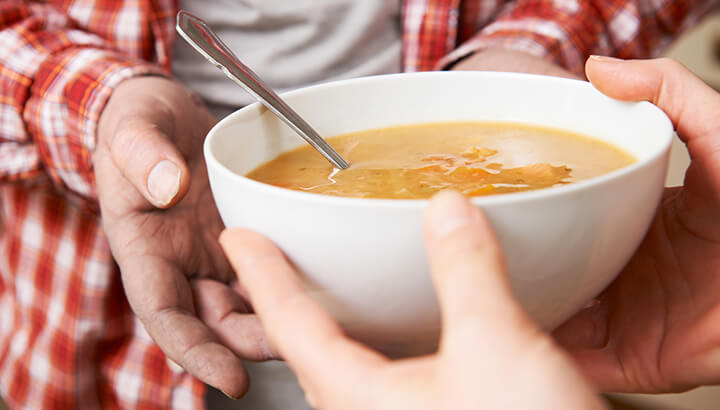
Winter can be a magical season. A blanket of snow covering the landscape can conjure feelings of awe and wonder. Festive occasions with friends and family can make the heart glow. And outdoor activities like skating, skiing and sledding can make you feel like a kid again.
However, there’s no doubt that wintertime can be stressful too. Grey skies, prolonged cold spells and icy commutes can take their toll. Not surprisingly, both depression and physical illness tend to spike from the end of October until the beginning of April. With that in mind, what can you do to shake off and survive a case of the winter blues?
Why winter is more dangerous and stressful
To begin with, it’s important to recognize that winter really is more stressful on the mind and body than the other seasons. When it comes to extreme weather, most of us think of heatwaves as being the biggest danger. In reality, however, cold spells kill up to seventeen times more people.
In particular, cold weather affects the body in ways that make people more vulnerable to preexisting conditions like cardiovascular disease or immune disorders. For example, the body responds to frigid conditions by decreasing blood flow to the skin and extremities in order to conserve heat. Consequently, blood becomes more concentrated in the central parts. The body’s cells respond absorbing excess salt and water. But this leaves the remaining blood “thickened,” which makes it more prone to clotting. No wonder strokes and heart attacks occur more frequently in the winter months.
Seasonal Affective Disorder (SAD)

Seasonal Affective Disorder is another condition people are susceptible to this time of year. Reduced sun exposure can lead to a Vitamin D deficiency, which is linked to mood disorders like depression and immune system impairments. In fact, Vitamin D is found in very few foods and our primary source is sunlight, which synthesizes cholecalciferol in the skin to manufacture this vital nutrient.
In actuality, Vitamin D is really more of a hormone than a nutrient. So, it’s little surprise that deficiencies of it from lack of sunlight can disrupt your circadian rhythms and deplete levels of a neurotransmitter called serotonin, which is responsible for mood elevation and mental balance. If you are feeling constantly fatigued and depressed for no particular reason during the winter months, then Seasonal Affective Disorder may be the reason.
No doubt, winter poses unique challenges to our physical and mental wellbeing. With that in mind, what are some practical tips for staying safe and beating the winter blues? Here are some tips for surviving the winter blues:
1. Brighten your environment
Peel back those drapes, open those curtains and get as much sunlight as possible. Full spectrum lights for the indoors can also help brighten your mood too. Making sure you experience outdoor activities can help ensure you are getting a healthy amount of sun exposure.
2. Dress in layers
Cold weather may not cause colds, but frigid conditions do tax the body’s resources by raising blood pressure and lowering immune responsiveness. Experts suggest four layers of loose-fitting clothing is best for maintaining maximum warmth. The innermost layer should be a highly insulating material like wool, polyester or microfiber garments. The outer layer should be both water and wind resistant.
In particular, wool is especially well-suited as an inner layer because it is odor-resistant and water-repelling. Jackets and coats employing softshell fabrics — designed to offer a combination of windproofing and water resistance — are ideal as an outer layer of protection.
It’s also important to protect your head and extremities from the cold. Insulated boots, mittens, caps and scarves keep heat from escaping. It’s a myth that we lose 80 percent of body heat if our heads aren’t covered — the figure is closer to 10 percent. However, ears, fingers and toes are more susceptible to frostbite, so keep them bundled up.
3. Wash your hands frequently
Cold weather kills germs, bacteria and microbes outdoors. But raising thermostats indoors helps make door handles, countertops and other surfaces breeding grounds for viruses and other harmful microorganisms. Washing your hands frequently with soap or using an all-natural moisturizing hand sanitizer can help you stay germ and illness free. Here’s a quick and easy recipe for making your own all-natural and non-toxic hand sanitizer:
Ingredients
- 8 tbsp aloe vera gel
- 16 drops tea tree oil
- 10 to 12 drops lavender essential oil
- 1 tbsp witch hazel (or vodka)
- A few drops lemon essential oil
- A few drops vitamin E oil (for a moisturizing effect)
Instructions
1. Add ingredients to a bowl and mix thoroughly.
2. Pour the mixture into a spray bottle.
3. Shake before each application.
4. Eat right

Cabin fever and depression can prompt many of us to self-medicate with food. Empty carbs, sugar snacks and processed foods may give us a quick jolt in the form of a blood glucose spike. But, they inevitably leave us feeling worse off once the temporary “sugar high” wears off.
In contrast, complex carbs and whole grains provide the kind of nutrients that boost serotonin levels that enhance and stabilize your mood. Try adding foods like yummy yams, whole grain muffins, luscious lentils and sumptuous spinach to your diet. A few squares of dark chocolate or a cup of honey-sweetened hot cocoa can also lift your mood naturally, but without a milk chocolate hangover.
Here’s a simple recipe to make some deliciously wholesome all-bran muffins.
Ingredients
- 1 1/2 cups wheat bran
- 1/3 cup vegetable oil
- 1 cup buttermilk
- 1 egg
- 2/3 cup brown sugar
- 1/2 tsp vanilla extract
- 1 cup of flour
- 1/2 cup or raisins or walnuts
- 1/2 tsp salt
- 1 tsp baking soda
- 1/2 tsp baking powder
Instructions
1. Preheat oven to 375℉.
2. Grease muffin tins or use paper muffin liners.
3. Mix bran and buttermilk in a bowl and let stand for 10 to 15 minutes.
4. In a separate bowl, mix egg, oil, brown sugar and vanilla extract. Afterwards, add to bran/buttermilk bowl.
5. Sift together flour, baking soda, baking powder and salt. Then, add flour mixture to bran/buttermilk bowl while stirring.
6. Add raisins to bran/buttermilk bowl and stir thoroughly.
7. Spoon muffin mix into trays.
8. Bake for 15 to 20 minutes.
5. Keep active
Don’t let cold weather keep you indoors. Brisk outdoor activity is an opportunity to get fresh air, sunshine and social interaction, which we often miss out on when the weather turns frigid.
Cold weather conditions inherently put more stress on the body. So, aim for regularly scheduled moderate activities rather than intense but intermittent workouts. Studies suggest that consistent but modest exercise can boost endorphins and normalize your circadian rhythm, which can get disrupted during the winter months.
6. Take up a hobby
Perhaps it’s just too cold to get out where you are. Taking up a new hobby or activity is a great way to beat cabin fever. Maybe you’ve always wanted to learn a new instrument, organize a book discussion group or host movie night with friends.
According to Sue Pavlovich, of the Seasonal Affective Disorder Association, activities that keep your mind focused and engaged can prevent you from succumbing to the winter doldrums. As she notes, “It could be anything, such as playing bridge, singing, knitting, joining a gym, keeping a journal or writing a blog. The important thing is that you have something to look forward to and concentrate on.”
7. Find ways to help others

One of the most powerful ways to feel better about yourself is to help others. Recently, depression, substance abuse and suicide rates have surged among the affluent. Feelings of anomie, social isolation and a lack of purpose are a few of the factors fueling this trend. These emotions can be especially pronounced during the holidays.
Ironically, wealth can’t buy happiness or self-worth. However, studies and anecdotal evidence show that helping others bolsters your self-esteem and satisfaction with life. Gratitude, connection and a sense of meaning are among the most important reasons people feel good when they help others.
In particular, volunteering in a soup kitchen or charitable organization puts you in touch with people who are truly suffering and needy. When you see what many of your fellow human beings are going through, then your own problems can seem pretty small. So, if you are feeling the winter blues, then consider finding ways to brighten someone else’s life. You might just find that you feel better about yourself in the process.
Take care of yourself this winter
Most people are affected by the winter blues at some point. It’s important to realize that moods are impacted by external conditions — less sunlight, colder temperatures and bleaker landscapes. However, there are positive things you can do that will help you take the winter season in stride.
If you have suggestions on how to beat the winter blues, we’d love to hear them. Please share them in the comments section below.
— Scott O’Reilly

